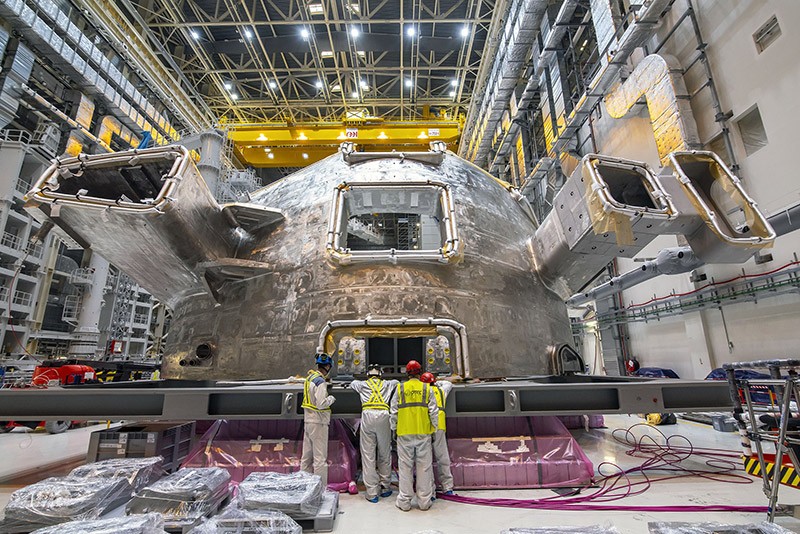Hello Nature readers, would you like to get this Briefing in your inbox free every day? Sign up here.
Long derided as a prospect that is forever 30 years away, nuclear fusion seems finally to be approaching commercial viability. There are now more than 30 private fusion firms globally, attracting billions in private investments. Advances in materials research and computing are enabling technologies other than the standard designs that national and international agencies have pursued for so long. “Sooner or later this will be cracked,” says Chris Kelsall, chief executive of the fusion firm Tokamak Energy in Culham, UK. “And it will be transformative.”
Nature | 15 min read
Textbook knowledge about how to determine the strengths of chemical bonds seems to be oversimplified. Chemical bonds are usually stronger between atoms that have a larger difference in their electronegativity — which is influenced by the number of protons in the nucleus and the organization of the electrons. But in some cases, researchers have found that differences in the sizes of the atom, rather than their electronegativity, determine the bond strength. The stability and length of chemical bonds are key factors in molecules’ structure and reactivity, so understanding them is important for developing everything from pharmaceuticals to materials. “This is an intriguing reminder that in science we should always be careful of giving a simple answer,” says structural chemist Catharine Esterhuysen.
Chemistry World | 4 min read
Reference: Chemistry—A European Journal paper
Jonathan Pruitt, a prominent behavioural ecologist who studies how personalities form in communities of socal spider species, has been placed on administrative leave by McMaster University in Canada. The University of Tennessee, Knoxville has also withdrawn Pruitt’s PhD dissertation from its library system. Neither institution specified exactly how the moves were linked to last year’s allegations that Pruitt had fabricated data in a host of papers on which he was a co-author. Twelve publications have been retracted and expressions of concern have been posted for another ten. Pruitt chose not to comment, but previously told Science that he had not fabricated or manipulated data in any way.
Science | 5 min read
Read more: ‘Avalanche’ of spider-paper retractions shakes behavioural-ecology community (Nature | 6 min read)
Features & opinion
Table of Contents
Immunologist Robin Shattock, who works on messenger RNA vaccines across a range of diseases, including rabies and Ebola, offers his insight into the thriving field of vaccine science. Researchers should have a keen interest in the science itself to keep them going through the hard times, he says. “There are more failures than successes in this line of work,” he adds. “It’s unlikely that somebody is going to develop a vaccine from scratch in their PhD.”
Nature | 5 min read
Breast milk is the best food for babies, but it’s not an option for every child. Science writer Nina Notman, whose body didn’t produce milk after she gave birth, explores the chemistry of infant formula and how researchers are working to develop alternatives that more closely resemble human milk.
Chemistry World | 11 min read
A new template offers researchers a more accurate format for citing oral knowledge shared by members of Indigenous communities. Librarian Lorisia MacLeod spearheaded the effort to go beyond the existing ‘personal communication’ citation when referencing Indigenous elders and knowledge keepers. A personal-communication citation doesn’t typically appear in a reference list, which limits the recognition and dissemination of Indigenous science. The new templates are already used by around 25 colleges and universities in Canada and the United States.
Eos | 4 min read
Reference: KULA: Knowledge Creation, Dissemination, and Preservation Studies paper
When physician and pathologist Dorothy Andersen confronted a slew of puzzling infant deaths, she suspected the accepted diagnosis wasn’t right. Her medical sleuthing led to our current understanding of cystic fibrosis. But she is by no means a household name. This co-production between the Lost Women of Science Initiative, Scientific American and radio producers PRX is the first in a series called ‘Lost Women of Science’.
Scientific American | 31 min listen

